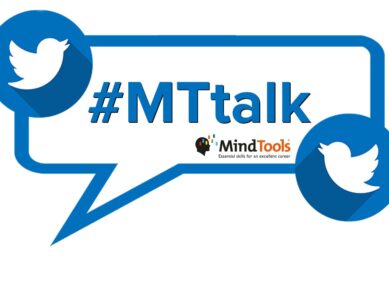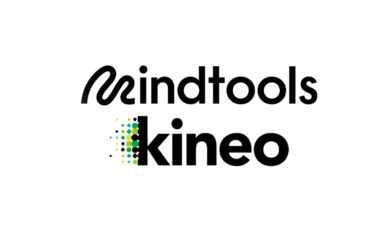“Knowledge is power, but has little value unless it can be accessed and put into practice.”
– Melany Gallant
Making Lasting Changes
Have you ever tried to make a significant lifestyle change? If you have, you’ll know that it’s not always easy! You may also know that you have a better chance of succeeding if you stick to a method that works, such as following these five steps:
- Understand that you can’t change everything immediately.
- Know why you’re doing it.
- Find cheerleaders and people who support you.
- Evaluate your progress.
- Convert failures and challenges into learning opportunities.
But why are we talking about lifestyle change when the topic is “creating a learning culture?” Read on to find out!
Five Steps Toward a Learning Culture
Creating a learning culture is like making a lifestyle change, but on a much larger scale. Let’s look at the same five steps from the perspective of creating a learning culture.
- You can’t do all of the learning in one day. Learning has to be done consistently, every day, in different ways and in different places. Allow staff members to experiment, to ask questions, to fail, to question existing practices, and to learn from coaches and mentors. Also, allow dedicated learning time during working hours for research and reading.
- Every person in the organization must know why they’re learning. They also need to understand that learning isn’t punishment for poor performance, or that it’s only for a select few. It’s about the organization wanting everybody to become the best version of themselves, and making use of its collective knowledge base. Learning has to be enabled by the company’s values and must be intentionally built into processes, practices and job responsibilities.
- Every executive, manager, supervisor, and team leader must be a “learning cheerleader” so that the learning mindset filters down to every person on every level. Learning must be encouraged, enabled, expected, and respected. Praise people for learning; not just for excelling.
- You have to measure, evaluate and recognize learning. Using a Learning Management System (LMS) is an efficient way to do that.
- Learn to recognize failures and challenges as learning opportunities. Analyze such situations and turn them into case studies for collective learning.
Failures and Challenges in a Learning Culture
The following questions will help you look at failures and challenges from a learning perspective:
“How could we have avoided Situation X?”
“What would have mitigated the situation?”
“What did each person learn from the situation?”
“How can we handle this differently in future?”
“What changes do we need to implement?”
Creating a Learning Culture
During our #MTtalk Twitter chat on Friday, we discussed the topic “Creating a Learning Culture.” Here are the questions we asked, and some of the responses:
Q1. What is your definition of a learning culture?
@DrRossEspinoza A culture that encourages, supports and recognizes learning as a vital ingredient, and does something about it.
@Lucygordon83 An environment where you are encouraged and supported to develop and grow as a professional & individual.
Q2. What are the benefits of a learning culture to organizations and individuals?
@Midgie_MT As people learn, grow and develop, so does the organization. Opens up thinking, knowledge, skill and creative problem solving.
@DominicDuffin1 In a culture where people are not shamed for making mistakes, but where mistakes are instead seen as opportunities to learn, it’s less likely that mistakes will be repeated.
Q3. Why might it be difficult to create a learning culture?
@s_narmadhaa Because consistent learning takes a lot of effort, time, and money both from the individual and the organization. And because the results don’t show up overnight, it’s easy to lose motivation.
@carriemaslen A learning culture challenges the status quo & invites new ideas… not everyone is comfortable with that based on fear or ego.
Q4. Who is responsible for creating a learning culture?
@TwisterKW Everyone. Senior management need to “walk the talk,” model behaviors, promote/encourage development/change; invest in middle management; hire the right people – people who want to grow and learn. But it has to be everyone.
@GThakore It is required on both sides… proactive management and enthusiastic employees.
Q5. What role could C-level executives play in creating a learning culture?
@WonderPix Share their experiences, provide transparency, encourage and support others on their journey.
@PG_pmp C-Suite have a major role in creating a learning culture as down the line people will choose to walk on the path set by them.
Q6. Busy managers might say they have no time or expertise to coach team members. How would you respond?
@harrisonia Short answer to managers who say they don’t have time to coach staff or their team: MAKE SOME TIME.
@KrisGiere The response should be to evaluate the manager’s workload, priorities, process, and engagement. Afterward, look to create an environment where they prioritize coaching & mentoring, redistribute workload if necessary, make giving back part of the performance measures, etc.
Q7. What forms and sources of learning do you prefer for yourself or your team? Why?
@JKatzaman People who take the initiative to learn, whether in person in classes or online, are a plus. Either way is good if results bear them out.
@Yolande_MT I learn by asking “why.” A lot. And I teach by asking others good questions; it gets them thinking, and thinking leads to creativity and creativity solves problems.
Q8. In what ways can you embed learning in the daily flow of work?
@Limha75 Make sure words “learning,” “developing,” “improving” etc. are part of the team language.
@KobusNeethInst Mingle with people who know more than you. Listen closely and ask questions designed to help you learn more.
Q9. How can you make better use of technology to create a learning culture?
@ShannonRenee Technology can expand our learning opportunities, as well as who we learn from. Folks with PhDs in life are in some ways smarter than those with academic PhDs.
@JKatzaman Investing in technology to have the best learning hardware and software available. Learning dies with obstructed access. Make learning a passion rather than a chore.
Q10. If you were in charge of creating a learning culture in your workplace, what would you do differently tomorrow?
@Mphete_Kwetli Change nothing, but be in the same space as your team. Listen to the team on what winning means to everyone. Tap into their “winning characters” and embrace them.
@MicheleDD_MT Identify key business processes and look for the places where it touches the employee. Are there opportunities to provide learning at these points?
To read all the tweets, have a look at the Storify version of this chat here.
Coming Up
When we create a learning culture, we also start to develop a pool of collective wisdom. So, next time we’re going to discuss “Wisdom at Work.” There are many things that contribute to a person’s wisdom, but we’d like to know which element you think is most important. Click here to cast your vote.
Resources
In the meantime, here are some resources that will help you to learn more about creating a learning culture:
- Gagne’s Nine Levels of Learning
- Instructor-Led Training
- Take Your Team’s Learning to the Top Level
- Learning Styles Video
- VAK Learning Styles
- Meeting the Challenges of a 24/7 Globalized Learning Culture
- 70:20:10
- Online Training
- Learning Curves
- Engaging People in Learning
- Case Study-Based Learning
- ABCD Learning Objectives Model
- The 5 E Learning Cycle
- How to Run a World Café
- Helping People Flourish at Work
- Flourish – Book Insight





Comments
stephen OKOJIE says
7 years agothanks for this info. very eye opening to the fact of learning.
i appreciate .
Midgie Thompson says
7 years agoGreat to hear Stephen that you found this interesting. I hope you continue to enjoy learning using more Mind Tools resources.